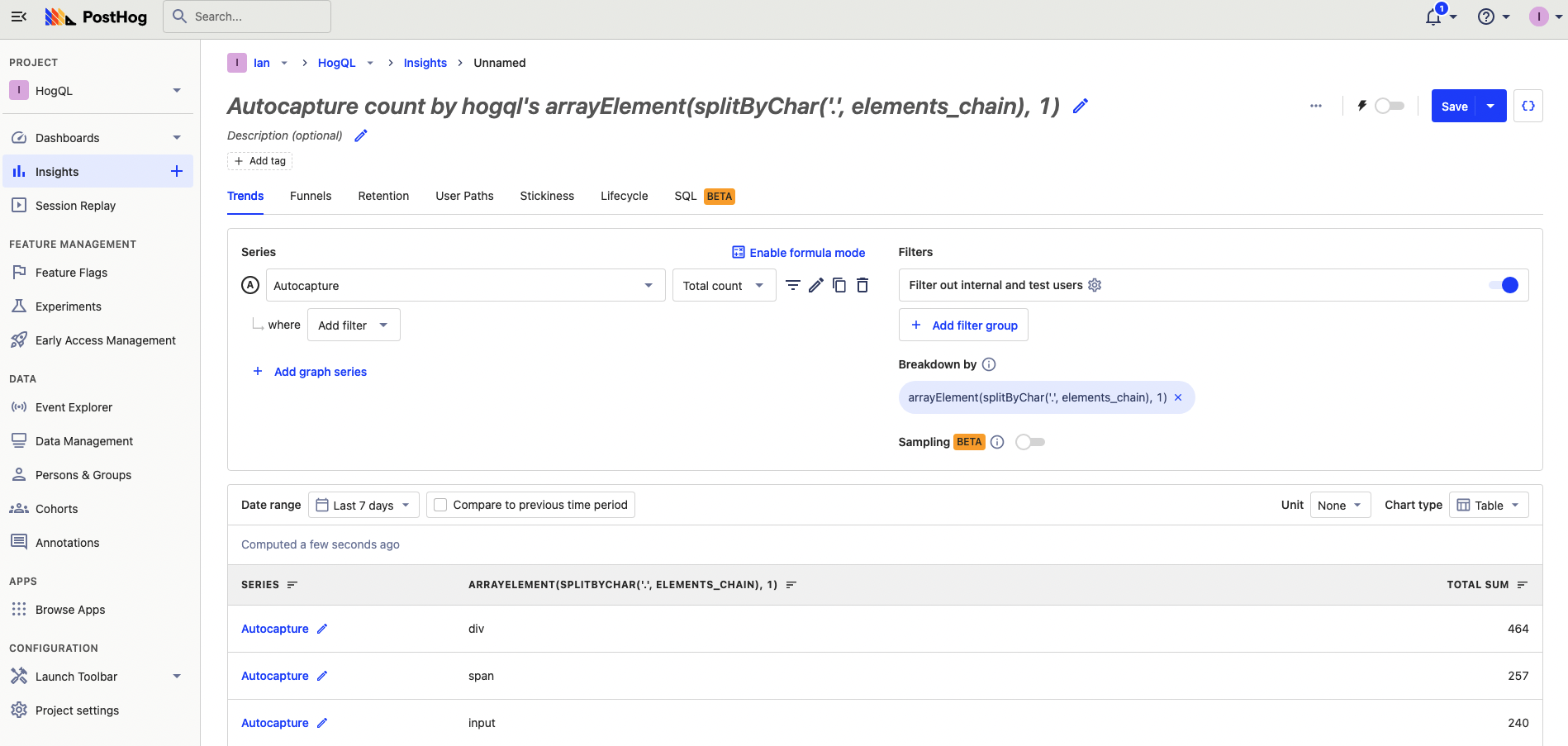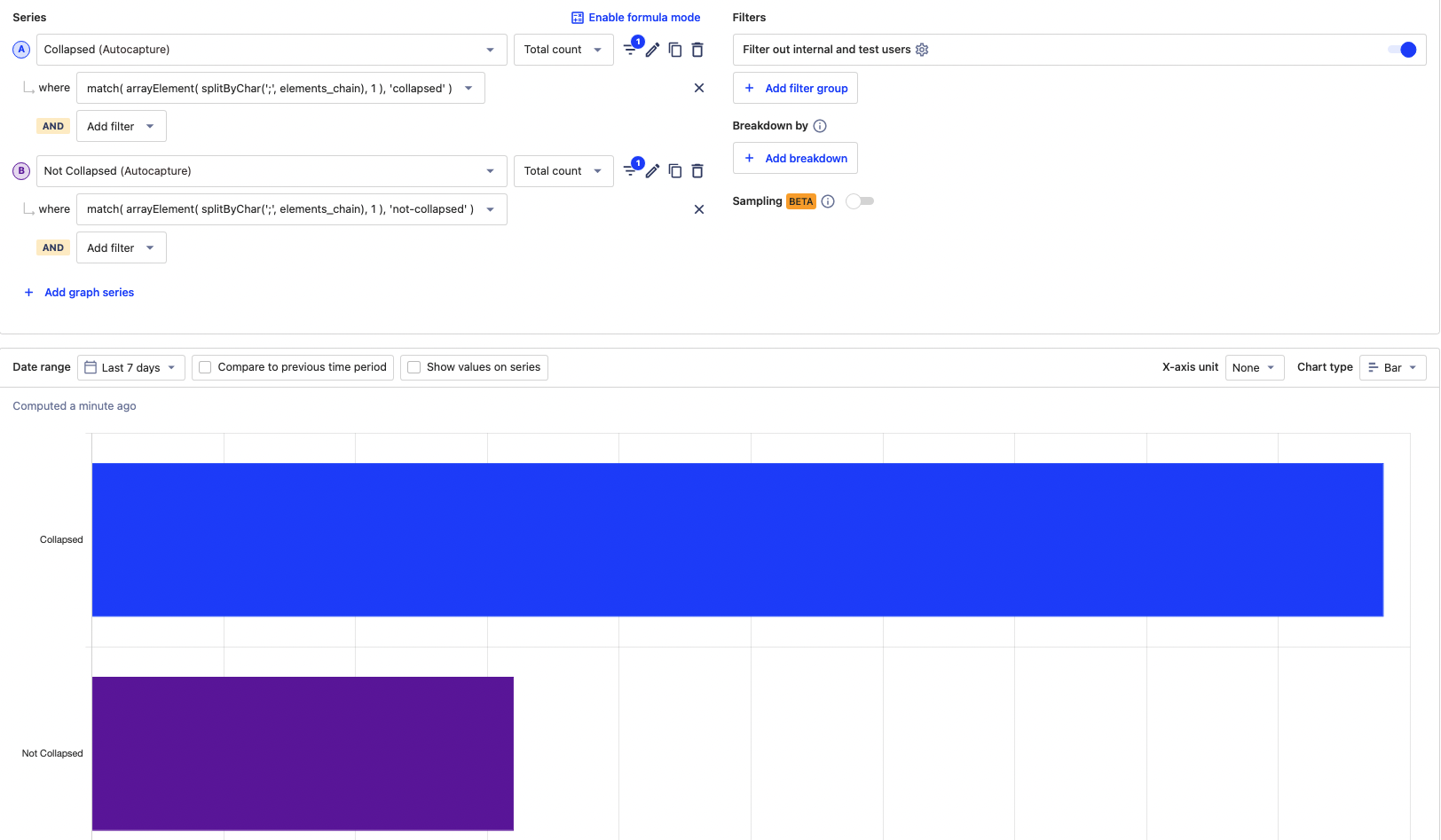Autocapture is a powerful way to capture usage data without having to implement any tracking yourself. HogQL unlocks more of that data for analysis. In this tutorial, we go over examples of how you can use HogQL to analyze autocapture events.
The autocapture element chain
Every autocapture event contains data on the "location" of that event in your code. It does this by creating an element chain from the specific element a user interacted with like <a>, <input>, or <button> to highest-level components like a <body> or <div> tag.
We can access the element chain by using the autocapture series, then using elements_chain in our HogQL expression.
In its default form, this data isn’t super useful. When we begin to use HogQL’s functions, it becomes incredibly powerful.
Breaking down by first and last elements
We can use HogQL to turn the element chain into an array with splitByChar(). From this array, we can get the element at any index. To get the element at the first index, use the expression arrayElement(splitByChar('.', elements_chain), 1).

We can also get the full component, where getting the first or last index might be helpful:
- To breakdown by the first component in the chain, use
arrayElement(splitByChar(';', elements_chain), 1) - To breakdown by the last component in the chain, use
arrayElement(splitByChar(';', elements_chain), -1)
You can use this method to other get components or elements at other indexes or run other array-specific functions.
Breaking down by attributes
Next, we extract attributes of an element like ID, href, and class. To do this, we use the extract() function which takes the elements_chain and regex to return a value. PostHog automatically adds attr__ to the attributes in the element chain, so we must include that in our regex.
Examples of attribute breakdowns include:
- For the
id, useextract(elements_chain, '[:|"]attr__id="(.*?)"') - For the
class, useextract(elements_chain, '[:|"]attr__class="(.*?)"') - For the
href, useextract(elements_chain, '[:|"]attr__href="(.*?)"') - For the
data-attr, useextract(elements_chain, '[:|"]attr__data-attr="(.*?)"')
Filter for specific components
We can use HogQL to filter for events where the elements or components contain a certain value. We can filter using match against the whole element chain, or we can use the same splitByChar() method as before.
For example, if we want to compare components with collapsed vs not-collapsed classes, we can create two series. One filtered for collapsed with the expression:
The other filtered for not-collapsed with the expression:
We can then compare these two in our visualization.

Filter for specific attributes
Like the specific components or elements filter, we can also filter for specific attributes. We use the same match function to check attributes like attr__class, attr__href, or attr__data-attr for a value we chose.
For example, if we want to filter for element chains that contain the ID good-input, we can use the expression match(elements_chain, '[:|"]attr__id="[^"]*good-input[^"]*"'). If we only wanted to check the first component, we can add the splitByChar() array creation and selection to end up with:

